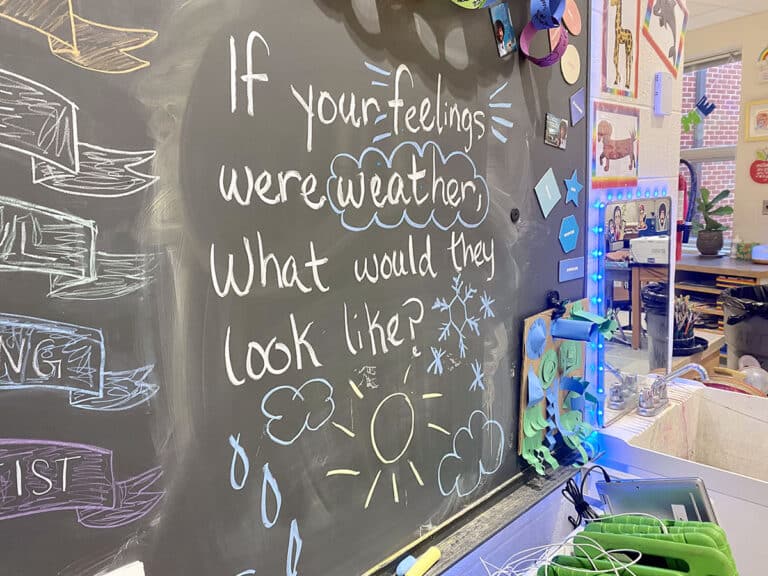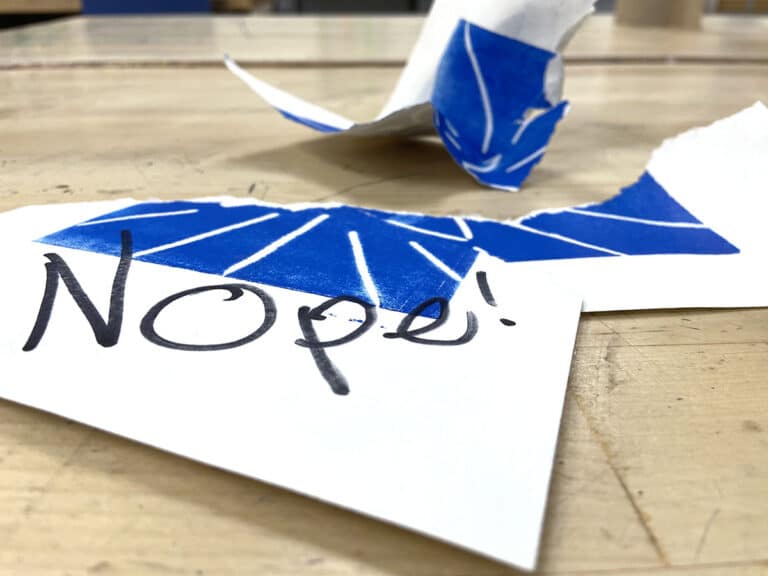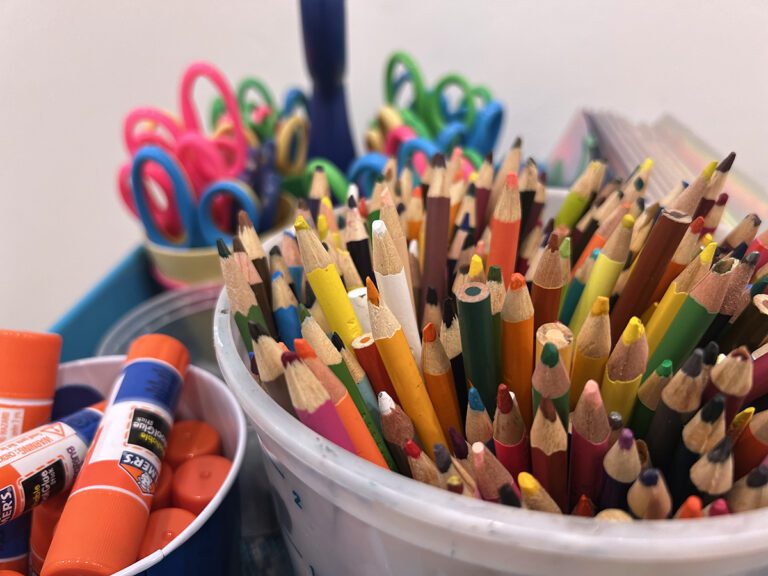One of the first things that I was asked to do when I became an art teacher was to decide what my classroom rules would be. That’s a tall order for a recent college graduate who was never required to take a classroom management class. I found a lot of cutesy posters that teachers made and pinned on Pinterest. I jumped right in and created my own rule poster that I thought would be the perfect fit for my classroom. I referenced the poster on the first day of school and then never made mention of it again throughout the year. It was merely a colorful list of things that I thought sounded great but held no importance whatsoever. I knew it, and it was painfully obvious the students knew it too.
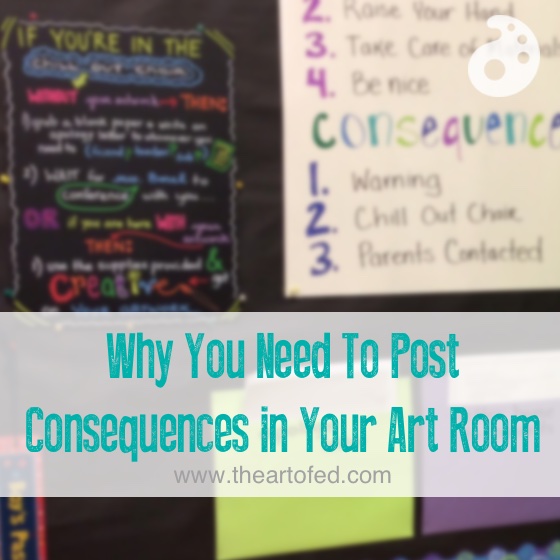
As I did more research, read books, and developed my own management style, I knew that I had overlooked one of the keys to making my rules work: posting corresponding consequences. I began the process of revamping my classroom rules to make sure they were visible, relevant, and concise. I followed those up with a set of consequences that were fair and easy-to-follow. Then I posted them by my “Chill Out Chair” area to make them visible.
Before I revamped my classroom management style, I would often just make up a consequence on the fly. Sometimes I would even jump to a consequence that wasn’t fitting with the rule that was broken. It wasn’t keeping my classroom under control, and it certainly wasn’t relieving any stress off my shoulders.
Creating Rules
When creating my new set of rules, I tried to make them as concise and clear as possible. I knew that making a huge list of rules would be difficult to reference, and the students wouldn’t be able to learn them. I narrowed it down to four rules that made the most sense for my classroom.
Rules
1. Listen and Follow Directions
2. Raise Your Hand
3. Take Care of Materials
4. Be Nice
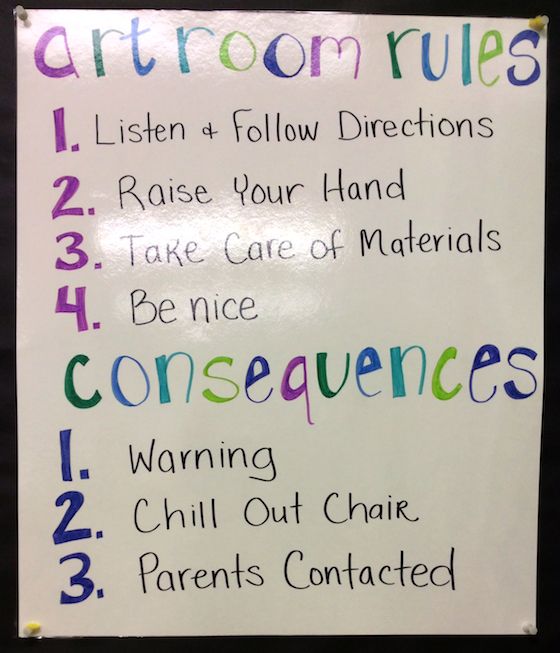
Enforcing Consequences
I reference this poster when a rule is broken so the student knows exactly what they did wrong. It is also good for the other students to hear the reminder so they don’t fall into the same problem. I also recognize that my students are just kids. They are going to make mistakes. So I made sure to give them the benefit of the doubt when I made my list of consequences. When a rule is broken we start at the top of my consequence list and work our way down.
Consequences
1. Warning
2. Chill Out Chair
3. Parents Contacted
Posting Expectations
My rules and consequences are posted on a bulletin board that is right above my Chill Out Chair desk. The area is quite visible to the rest of the classroom so students can always check the rules and consequences when needed. The classroom management area also houses directions for my Chill Out Chair, Parent Contact Sheets, and blank paper for when apology notes need to be written.

The sign for my rules and consequences are pretty plain, but I was so excited to create a separate poster for my Chill Out Chair area with a new art supply, Chalkola markers.

Aren’t they BRILLIANT!? Sometimes creating a poster in unexpected materials or written in a fun way can help the information better stick in your students’ brains. Chalkola markers come in ten colors and can be used on any non-porous surface. They’d be perfect to create your own rules and consequences or any other art room visuals.
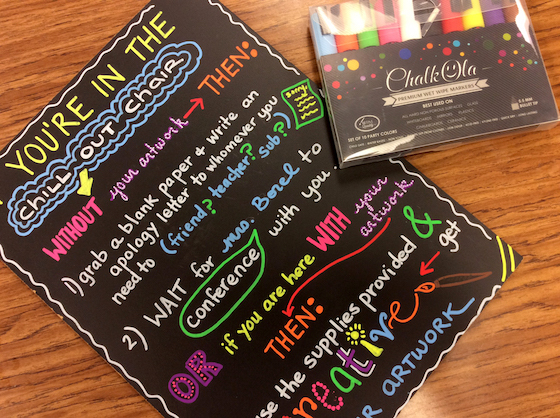
If you want to try out your own set you can get yours here (US) or here (UK) and use the promo code CHALK20A for 20% off.
It is important to reference the rules whenever you can in order to help your students get better at following them. It is equally important to follow through with giving consequences. To make sure your rules and consequences can be referenced easily, make sure you post them in a highly visible area of your classroom.
If you’d like to dive even deeper into classroom management, check out AOE’s online class Managing the Art Room, where you’ll walk away with a comprehensive, customized classroom management plan.
Do you post consequences in your room? What are they?
Tell us about your classroom management style!
Magazine articles and podcasts are opinions of professional education contributors and do not necessarily represent the position of the Art of Education University (AOEU) or its academic offerings. Contributors use terms in the way they are most often talked about in the scope of their educational experiences.


